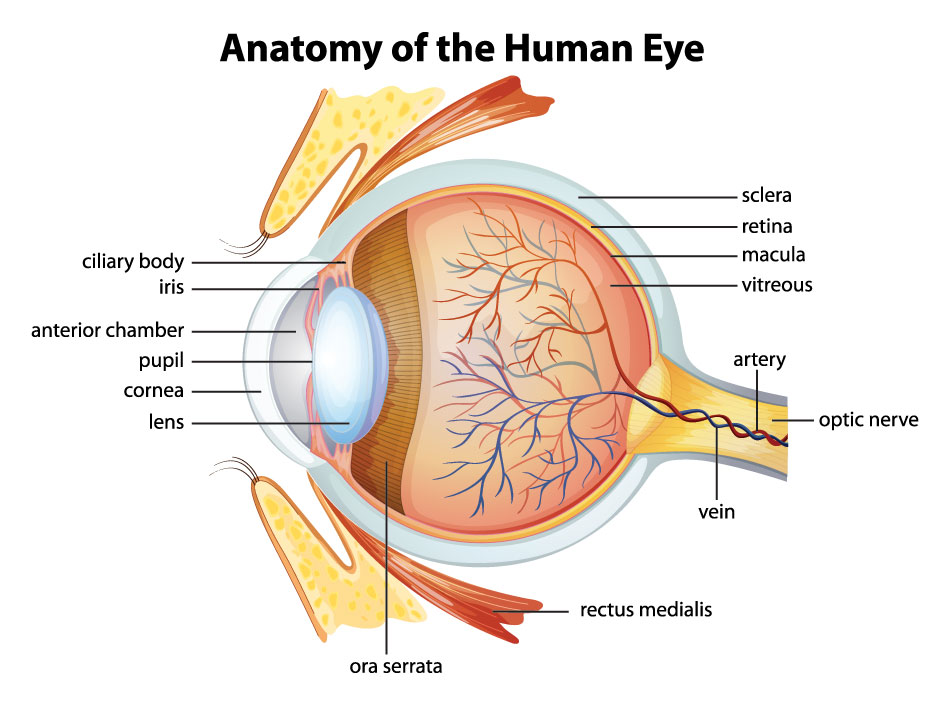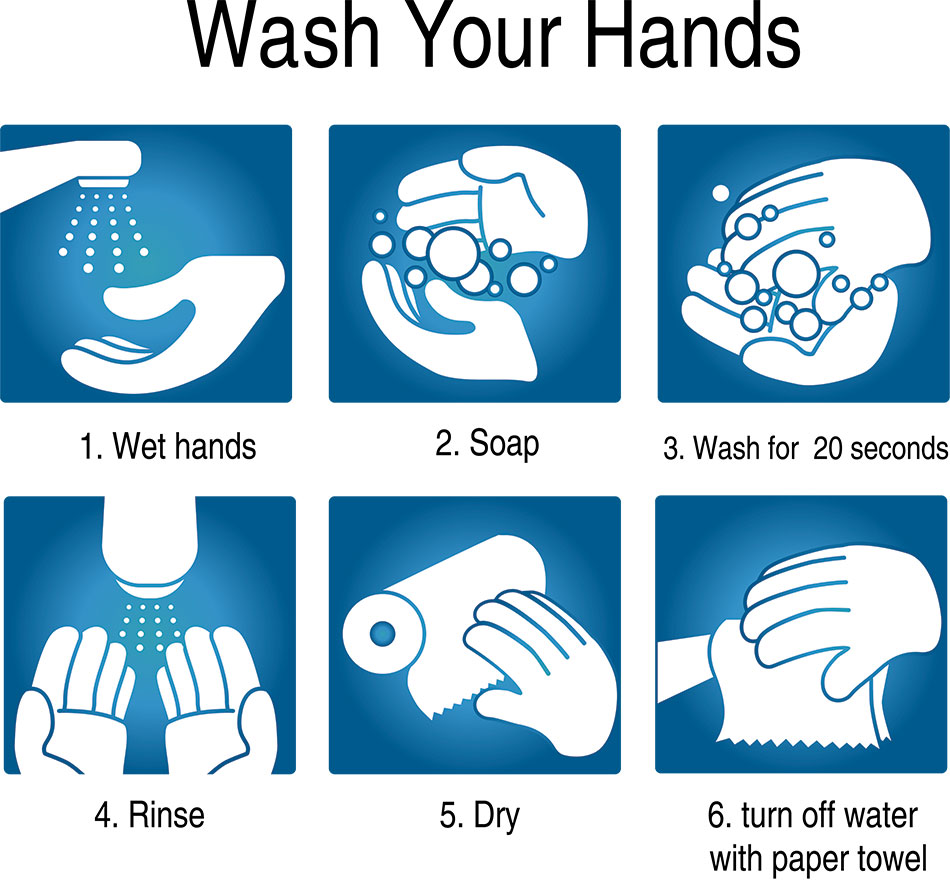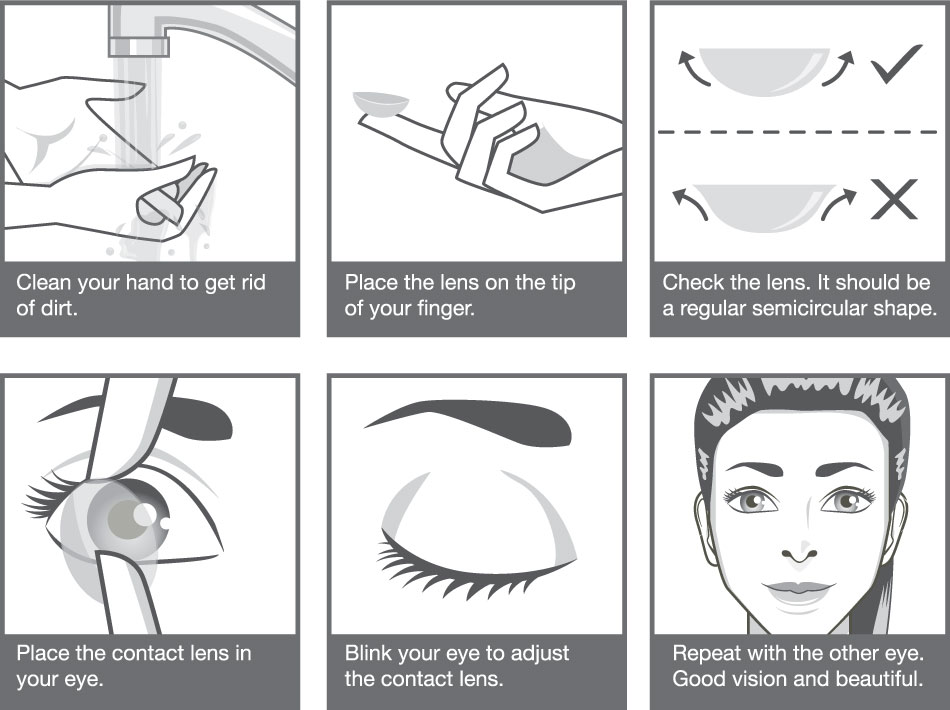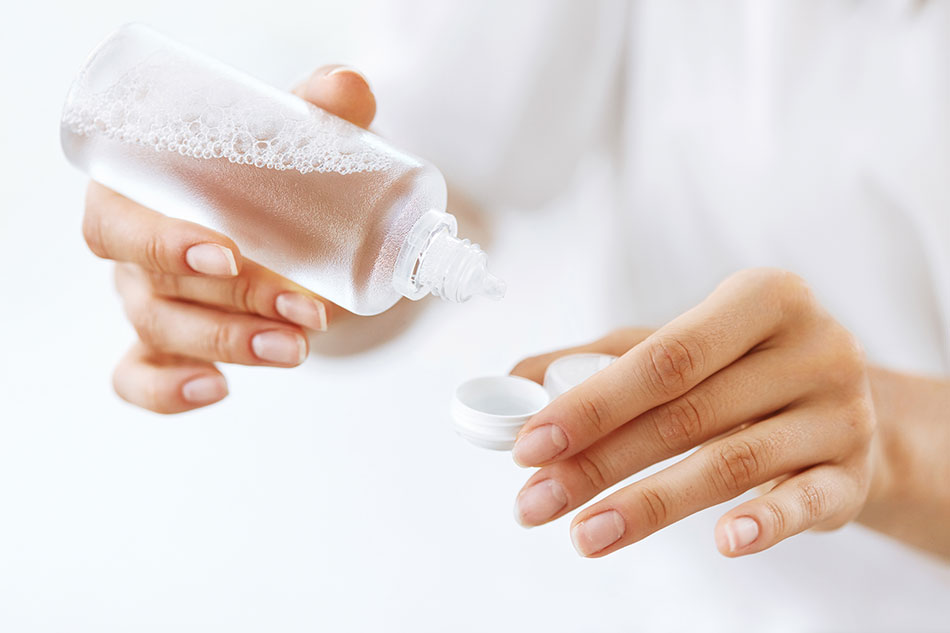How to Put in Contacts: A Quick Guide for Beginners

Switching from glasses to contact lenses is exciting, but many beginners feel nervous about putting something directly on their eye. The truth is that with the right technique and a little practice, learning how to put in contacts is simple and safe.
In this beginner’s guide, we explain how to put in contact lenses step by step, what to do before inserting them, and how to avoid common mistakes.
How Contacts Work

Before you learn how to put in contacts, first understand how they work. Sometimes, people wear colored contacts for fun or aesthetic reasons. However, most people need their contacts to see clearly throughout the day.
Your contact lenses are similar to prescription eyeglasses. The tiny lenses help change the way you process light as it enters the eye.
With proper vision, light enters your eye and focuses onto the retina. However, not everyone's eyes are capable of correctly focusing light. When this happens, you can have problems with your vision.
Here's what happens when you have vision problems:
If You Are Nearsighted
- Light enters your field of vision.
- Your eye focuses all of the light in front of your retina.
- Focused light doesn’t reach your retina.
If You Are Farsighted
- Light enters your field of vision.
- Your eye focuses light behind your retina.
- The light hitting your retina is not focused.
Now here's how wearing contacts can correct your vision:
Nearsighted Vision Correction
- Light enters your concave/diverging contact lens.
- The thin center and thick edges of the lens help your eye to create a farther focal point.
- Your cornea is then able to focus light onto your retina.
- You can see objects far away clearly.
Farsighted Vision Correction
- Light enters your convex/converging contact lens.
- The shape of the lens allows it to shorten the focal point.
- Your cornea then focuses light onto your retina.
- You can see close up objects clearly.
Glasses work in a similar way to contacts. They focus light at the right distance for clear vision. With that explanation done, we can turn our attention to you actually wearing your contacts!
What to Do Before You Insert Your Contacts

By preparing to put your contacts in, you can minimize any risk of infection. Here’s what to do before putting them in:
- Wash your hands thoroughly with lightly scented or scent-free antibacterial soap.
- Dry your hands completely with a lint-free towel.
- Clean and rinse your contacts, but don’t use water. Only use fresh contact solution.
Properly following these steps is key to avoiding infection. Water or old solution can contain bacteria that adhere to the lens. These dangerous pathogens could eventually find their way into your eye. Not to mention, old solutions aren’t as effective at cleaning your contacts.
As for water, according to the CDC, washing your contacts with it can introduce harmful bacteria into your eyes. If you want minimum maintenance, try using daily disposable contacts.
How to Put in Contacts

Now that your hands and contacts are clean, you’re ready to place the first lens in. Creating a routine will help you avoid common mistakes. So here’s a routine you can follow. Or you can set up your own:
1. Always Start With the Same Eye
To establish your routine, pick which eye you want to work with first. You should always start with the same one every time. Your routine will help you avoid getting your contacts mixed up. This is especially helpful if you have different prescriptions in each eye.
2. Use Your Index Finger
Once you know which eye you want to begin with, take a deep breath. Allow your body to relax for a second before you pick up the first contact lens. When you're ready, place it on the top of your index finger.
3. Make Sure Your Contact Is Facing the Right Way
Watch out for inside-out contacts. If it’s facing the right way, it’ll look like a smooth cup. Some lenses have a marker that indicates which way it should go. Double check that your lens is in the correct position before you put it on your eye. If it’s not, just flip it the other way.
4. Be Calm
It's important to approach your eyes with calm, steady movements. Focus on controlling your breathing as you bring your index finger closer to your eye. Use your free hand to hold open your top and bottom eyelids.
5. Avoid Blinking at First
Holding open your eyelids will help prevent you from blinking. While doing this, look up to the ceiling. Slowly place the lens on your lower eye and then you can blink again. As you blink, the contact lens will center itself.
After insertion: Clean Your Case

If you are not wearing daily disposables, always clean your contact lens case after use:
- Rinse with fresh solution, not water
- Let the case air-dry in a clean, ventilated area
- Replace your case every three months
A clean case keeps bacteria away and protects your eye health.
Troubleshooting: what if your eyes feel uncomfortable?
Once your contacts are in, check how your eyes feel. If you experience redness, irritation, or blurred vision:
- Remove your lenses immediately
- Inspect them for damage or debris
- Replace them with a fresh pair if needed
- If discomfort continues, wear glasses and contact your eye care provider
Contact lens safety tips for beginners
- Never reuse old solution
- Do not sleep in your lenses unless approved by your doctor
- Replace lenses according to the schedule recommended by your eye care professional
- Always carry a spare pair of glasses in case your eyes need a break
With practice and the right care, you will quickly become confident at inserting your contact lenses.
Find All of the Answers You're Looking For!
When you’re done putting in your contacts, take a moment to assess how your eyes feel. If there's any redness, irritation or difficulty seeing, you should take the contacts out immediately. You could have a sensitivity to the solution. Or you might need a new, better fitting prescription. Speak to your eye care professional to identify the issue and to fix it.
You can also discuss how to take care of other common contact lens problems. After a short while, you’ll become an expert on how to put in contacts. You’ll also know exactly what to do if you run into any issues!
FAQs: how to put in contacts
How long does it take to learn how to put in contacts?
Most beginners feel comfortable within a week of daily practice. The key is patience and building a consistent routine.
What if my contact lens feels uncomfortable after putting it in?
Remove the lens, rinse it with fresh solution, and try again. If the discomfort continues, replace the lens with a new one.
Can I put in contacts without washing my hands?
No. Always wash and dry your hands before touching your lenses. Skipping this step increases the risk of infection.
Are daily disposable contacts easier for beginners?
Yes. Daily disposables eliminate the need for cleaning and storage, making them a convenient choice for new wearers.
